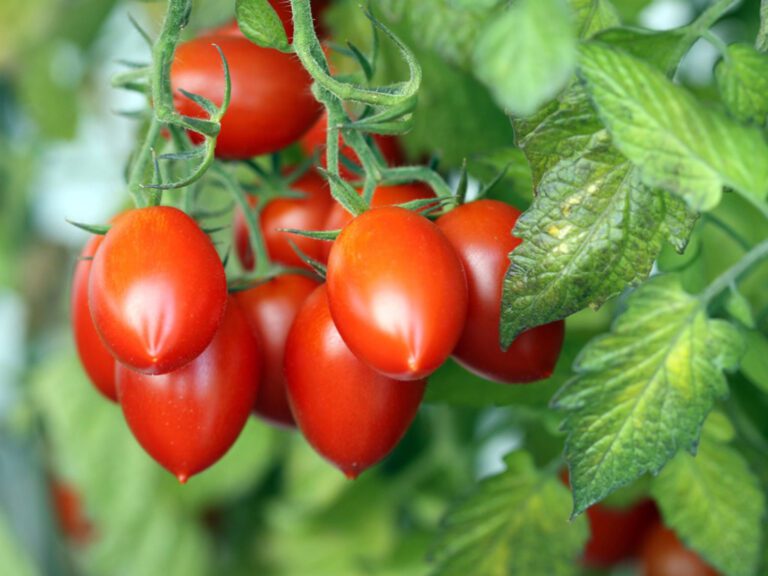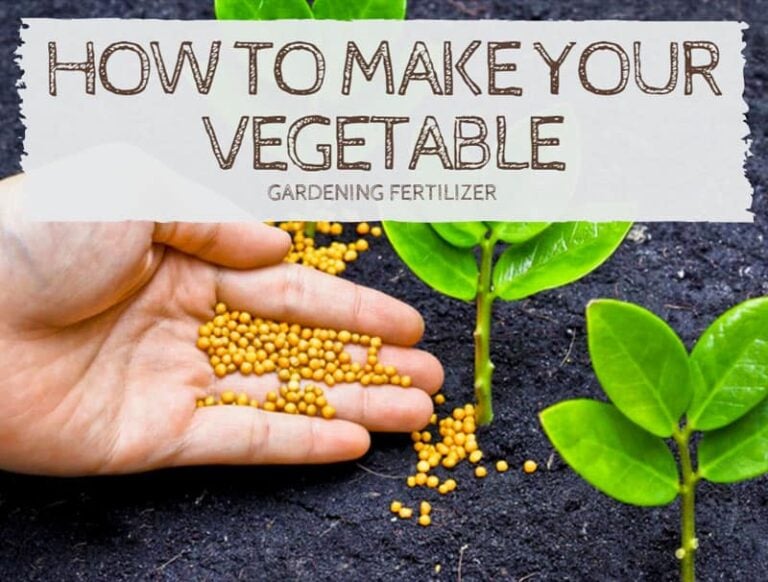Complete Guide: Square Foot Garden Tomatoes
In this article, we’ll be covering what square foot gardening is, how to do it, and what tools you need to make beginning a square foot garden easy.
Square Foot Gardening:
Suppose you’ve always wished to grow your tomato garden, but you’ve been disappointed by the idea of spending endless hours bent over countless rows of vegetables. In that case, square foot gardening might be the perfect answer for your prayers and whims.
Square foot gardening saves you a lot of space, and it is also known to deliver exceptional produce yields rivaling the amounts produced in more extensive row-style gardens. But maybe the most tempting aspect of this type of gardening is that a lot less physical work is needed, unlike the traditional row-style gardening methods.
The phrase ‘square foot gardening’ was created in 1981 by Mel Bartholomew and discusses the practice of separating a gardening space into equivalent sections – typically around one square foot, hence the name. This technique depends on the structure to create small, concentrated gardens with high yields.
Advantages of square foot gardening:
The benefits of square foot gardening make it tempting for both seasoned green thumbs and novice gardeners. This particular gardening method practices raised garden beds that need minimal space, making it appropriate for those with limited resources and space and cosmopolitans wishing to plant a garden. A raised garden bed also offers appetizing landscaping in your front yard.
A raised garden bed permits gardening in areas where the soil is of meager quality. Such a garden bed can bypass clay-type and rocky soils that are not well-draining and don’t allow vegetable plants to establish robust root systems. In a raised garden bed, you can completely control what kind of soil your plants should grow in.
Additionally, the dense planting arrangement of a square foot garden can lead to the development of organic mulch, thus making it very hard for weeds to sprout. Square foot gardeners also find fertilizing and planting more uncomplicated and effortless as the soil is manageable and loose.
Square Foot Gardening Grid:
Different vegetables and plants require fluctuating amounts of space to flourish. Traditionally, a square foot gardener will measure and mark square foot sowing sections by making a web or a grid out of various instruments such as thin wood slats or strings. Using the square one-foot gardening grid units, the gardener sows the plants in the square areas instead of rows.
How much will you be able to grow?
Most gardeners, especially novice ones, will be astonished at the amount of crop that can be yielded from even a tiny raised garden bed if you’re using the square foot gardening technique.
A raised garden bed may produce enough vegetables for a small household to enjoy during the maturing season, and you can even freeze them for later. You can use frames to increase the number of plants per square foot and eventually maximize the yield of your square foot garden bed.
Tomatoes grown per square foot:
Using the square foot gardening method, you can quickly grow one tomato plant per 4 x 4 square.
Since they are a delicious additive to any salad, tomatoes are one of the gardener’s favorite plants to grow. Tomatoes grown by square foot gardening techniques have an unexpectedly high yield. A single healthy tomato plant in one square unit of the square foot garden can provide around 20 pounds of produce!
The Early Girl and Brandywine varieties of tomatoes are excellent for square foot gardening because they grow well upright and require little area.
Tomatoes:
A tomato is a super-food packed with nutrients that benefit many human body systems. Its nutritional content supports weight loss, heart health, and healthy skin.
There are different sizes and types of tomatoes, which can be cooked and prepared differently. These include stewed tomatoes, cherry tomatoes, soups, raw tomatoes, purees, and juices.
Knowing when to pick yummy red tomatoes is essential to getting the best possible quality and flavor from your garden. Color and size alone are not consistent indicators of maturity. Soil fertility, weather conditions, tomato variety, and other factors affect fruit ripening time and coloration. Full-color progress is often hindered after the fruit is ready to be picked.
Check the time to ripeness for the specific tomato varieties you’re growing.
An excellent initial point in deciding when to pick tomatoes is checking the number of days to harvest listed on the plant tag or seed packet. Since there are thousands of tomato varieties of all sizes, shapes, and colors, maturing times can vary from 60 days to over 100 days.
The countdown to the “days to harvest” starts when the sapling is planted in the garden rather than when the seed is sown. Seed sprouting usually takes about a week; then, the sapling should grow at least two groups of true leaves before it’s prepared to be transplanted, so if you’re growing your plants from seeds, the seedling production tallies as much as a month to the entire time to ripeness.
It’s usually better to let the tomatoes develop fully on the plant.
In an emergency, it is completely fine to harvest mature green tomatoes to let them ripen inside the plant. Grocery store traders usually pick the tomatoes when they are just starting to show color so the fruits can mature during shipment or while transporting. But the finest flavor quality and color come from tomatoes that ripen on the vine.
So, what qualifies as mature?
Green tomatoes get a lighter color upon reaching their full size, signifying the start of the maturing process. Around the time the color is halfway matured, the fruit closes off from the main plant. At this point in the ripening process, the tomato develops the remaining way without help from the vine. It can be harvested off the vine without losing its quality, nutritional value, or flavor.
Gardeners are sometimes reluctant to pick slightly green tomatoes, reasoning that the fruits might not produce a good flavor. However, in reality, reaping at any point after the half-color stage sanctions more control over the maturing process without wasting that homegrown flavor.
Stiffness is a good sign of a fully mature tomato.
Firmness is a great way to judge if a tomato is ready to be picked. Entirely red and ripe tomatoes should feel somewhat tender but not messy when you give them a gentle squeeze. At that point, they are completely ready to eat. The tomatoes should feel firm but not rigid if you are picking at the half-color stage.
Tenderness develops in the fruit as the aroma and color mature on the kitchen counter or the vine. The fruit might have no smell initially, but when they are ready to be cooked or consumed, the tomatoes create a solid earthy, sweet fragrance from their stem ends. As tomatoes can be of several different colors when they are mature and ready to eat, smell and feel are some of the best signs of ripeness.
There are some situations in which you should not wait for the tomatoes to ripen before harvesting them.
Temperatures over 90 degrees Fahrenheit are not suitable for many tomato varieties. High temperatures can make the fruit vulnerable to sunscald and other warmth-related problems. Additionally, carotene and lycopene, the orange and red pigments that give the fruits their color, cannot properly develop in hot weather. If your tomatoes have achieved their full size but won’t develop color, immediately pick them and let them complete their ripening in an air-conditioned kitchen.
If severe storms or the season-ending cold weather threaten your tomatoes, you can save the ripe green fruits by picking them a little early. Any tomatoes that have reached their full size and turned a light green are believed to be green ripe. Green tomatoes are sumptuous for various recipes, like green tomato salsa or fried green tomatoes. Or, at this stage, you can still ripen them indoors. Just place them in a paper container with ethylene-producing fruits such as apples or bananas to assist their ripening.
Picking ripe red tomatoes:
The preferred way to harvest tomatoes is with a clean, sharp pair of garden clippers or pruning shears.
The sharp green leaves that spread out at the top of the fruit are the calyx that once used to protect the flower bud. Some tomatoes separate from the plant efficiently, leaving their calyx behind on the vine. Others separate from the vine taking the calyx and a short stem with them. The branch usually breaks away at a slightly swollen juncture connecting to the plant. A few kinds of tomatoes break away effortlessly only when they are overripe, so you should pick them by cutting them off the vine.
Don’t damage the fruit or plant if you are met with any resistance at the stem while picking your tomatoes. Use a sharp, clean pair of garden clippers or pruning shears to cut the mature tomato from the plant. Hold the fruit with one hand and slice the stem just over the fruit with the other.
Benefits of Tomatoes:
Tomatoes are laden with a substance known as lycopene. It gives them their signature bright red color and helps shield them from the sun’s harmful ultraviolet rays. Similarly, it can help also protect your body cells from destruction. Tomatoes also have vitamins B and E, potassium, and other nutrients.
Immune System:
Lycopene is an antioxidant that fights molecules known as free radicals that can harm your cells and negatively affect your immune system. Because of this, foods high in lycopene, such as tomatoes, might make it improbable to have stomach, prostate, or lung cancer. Some researches show that tomatoes might help prevent diseases in the mouth, pancreas, throat, colon, cervix, and breast.
Heart:
Lycopene can also aid in lowering your levels of cholesterol or LDL and your blood pressure. And that, in turn, might reduce your chances of getting heart disease. Other nutrients in these red fruits, like antioxidants called flavonoids, and vitamins B and E, can improve your heart health, too.
Eyes:
Tomatoes are loaded with beta-carotene, lycopene, and lutein. These are all potent antioxidants known to protect the eyes against light-induced injuries, the development of cataracts, and AMD.
Oral Health:
Lycopene can help with periodontitis, gum diseases, and gingivitis similarly as it can help prevent cancer – by fighting the free radicals. But consuming lots of raw tomatoes can harm the enamel and coating on your teeth – due to the high quantity of acid – and brushing soon after can make that more damaging. It’s better to wait half an hour before you brush your teeth.
Skin:
You’re aware that sunscreen and hats help shield you from the sun, and many of us don’t even leave our residences without an umbrella. Well, the lycopene in these red fruits also can do something for that, probably in the same way it shields the tomatoes. It’s not an alternative to sunscreen; you don’t have to put it directly on your skin. It assists by performing on your cells from inside your body.
Blood pressure:
Preserving a low sodium intake helps to uphold healthy blood pressure levels. But, increasing potassium intake is just as vital due to its expanding effects on the arteries.
Low sodium and high potassium intake are also related to a 20% decreased risk of dying from all reasons.
Diabetes:
Tomatoes also help diabetic persons, as they are full of fiber. Research has shown that anyone with type 1 diabetes who consumes high-fiber foods has lower blood glucose levels, whereas those with type 2 diabetes can have improved lipids, insulin, and blood sugar levels. One serving of cherry tomatoes provides around 2 grams of fiber. You should consult with your doctor so they can advise you on how many servings to take.
Constipation:
High fiber and water content diets like tomatoes may support regular bowel movements and help with hydration. Tomatoes are often labeled as laxative fruit.
Square foot gardening allows gardeners to grow healthy, high-yielding gardens while using less time, effort, and space than a traditional row garden.






